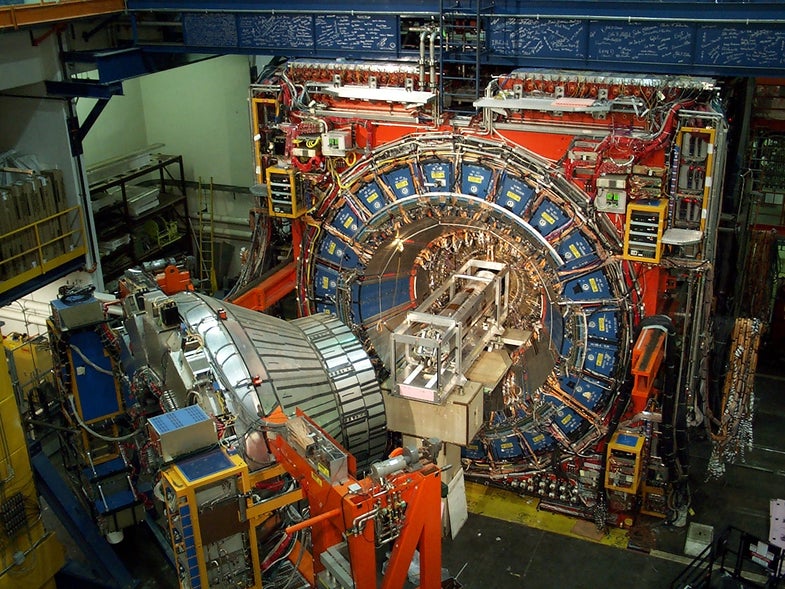Particle Accelerators Could Be Used to Produce Energy (and Plutonium)
A long-forgotten physics paper holds the secret

Particle accelerators, which are not renowned for their real-world applications, could in fact be used to produce energy, according to a 34-year-old research paper that resurfaced this week.
It’s not exactly intuitive — accelerators require plenty of power to work — but one of the founders of Fermilab wrote in 1976 that they could produce more energy than they use, because they’re extremely good at fissioning atoms.
At the time, accelerator physicist Robert Wilson was the director of Fermilab, according to Technology Review’s arXiv blog. He was building an accelerator called the Energy Doubler/Saver, the first device to use superconducting magnets on a large scale.
Wilson wrote that superconductivity would reduce the power consumption of accelerators.
Wilson’s abstract was recently posted to the physics arXiv, a clearinghouse for research papers. Here’s a recap:
In the Energy Doubler/Saver, protons comprising an energy of 1,000 giga-electron volts would be sent into a block of uranium. Each proton would generate 60,000 neutrons, which would be absorbed by the uranium nuclei to produce plutonium.
When burned in a nuclear reactor, plutonium produces 0.2 GeV of fission energy. So multiply that by 60,000 extra neutrons, and that’s 12,000 GeV. Ergo, a single proton could lead to the release of 12,000 GeV of energy.
Now, this is not very much energy — you would need about 600,000 TeV (tera-electron volts) to power a 10-watt light bulb for one second, and there are 1,000 GeV in every TeV. So you would need lots and lots of protons to make enough plutonium to power a reactor.
What’s more, as Tech Review’s arXiv blog notes, the calculation leaves out a lot of detail, including how much energy would be lost. It takes about 20 MW of power to produce an 0.2 MW beam in the Energy Doubler, Tech Review says.
Still, the concept is interesting — as Wilson wrote in the 70s, it might be worthwhile to calculate the cost of making each plutonium proton to see if net energy production would be possible.
It could be handy for new nuclear power plants, as well as spacecraft in need of long-term power supplies. But given current nuclear non-proliferation treaties, it’s unlikely that the Large Hadron Collider will be tapped to make a new supply of plutonium anytime soon.
[via Technology Review]